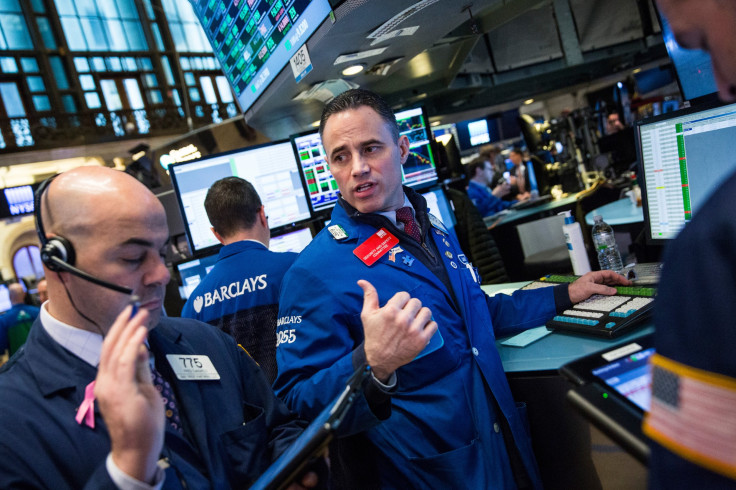Fed Rate Meeting: Global Stock Market Volatility Puts US Central Bank On The Hot Seat

World markets aren't making things easy for the Federal Reserve. American central bankers had hoped that 2016 would see solid economic growth, continued employment gains and steadily rising inflation.
But chaotic markets have thrown all those assumptions into question. On Monday, the Standard & Poor’s 500 index closed 166 points, or 8.1 percent, below where it stood at the start of the year. Commodities like copper continued to slide as crude oil prices sank 20 percent to around $30 a barrel, raising investors' fears that slackening global growth is drying up demand for energy and materials.
As Fed officials prepare for their first interest-rate-setting meeting of 2016, market turbulence is poised to loom large over the deliberations. In particular, investors will be wondering whether the Fed sees stock market gyrations as simple noise or a harbinger of economic woes to come.
Markets are all but certain that the Fed will hold off on raising rates when members of the Federal Open Markets Committee meet Tuesday and Wednesday. But the Fed’s announcement should shed light on whether it’s still feasible for the Fed to raise benchmark interest rates four times in 2016 as officials had previously expected.
At present, those projections appear optimistic. “The data that will be important to the Fed don’t seem to lead to them following through on their projections,” said Tina Byles Williams, chief investment officer of the FIS Group, which manages $4.5 billion in assets.
Futures markets, too, are dubious. Bets on coming interest rate moves imply just a 1 percent chance that 2016 will see four rate increases, according to data from the Chicago Mercantile Exchange. The Fed’s rate hike in December was the first since 2006, ending an unprecedented stretch of near-zero interest rates.
When it comes to short-lived market events, Fed officials invariably take the long view, emphasizing a “data dependent” approach to assessing the broader course of economic cycles over the day-to-day vicissitudes of stock prices and energy futures.
But when markets scream, Fed officials take note, especially when market moves affect inflation expectations. That was the case for the Fed’s September 2015 statement, which came on the heels of a stock market correction driven — like the most recent declines — by fears that China’s economy could be decelerating more quickly than expected.
“Recent global economic and financial developments may restrain activity somewhat and likely put further downward pressure on inflation near-term,” Fed officials wrote in September. Analysts at Deutsche Bank expect the Fed to include similar language in this week’s monetary-policy statement, striking “a more cautious tone” than December’s upbeat missive, according to a recent note to clients.
For Fed officials, the biggest economic concerns are global. The twin forces of falling energy prices and rising exchange rates threaten to further dampen U.S. inflation expectations, which have dragged below the Fed’s target of 2 percent for more than 40 straight months.
St. Louis Fed chief James Bullard this month warned that oil’s impact on the dollar was “becoming worrisome” for future inflation expectations, despite his contentions that job gains and economic growth in the U.S. would “trump” those headwinds, pushing inflation up sometime in the coming year.
Inflation aside, however, a growing number of global banks have taken 2016’s stock sell-off as a potential bellwether of a coming recession. Last week Bank of America analysts increased their odds of a U.S. recession occurring this year to 1 in 5. “A global growth recession is far from assured, but financial markets seem to be on their way to pricing one in,” analysts at Citigroup wrote.
And although such a downturn remains unlikely, there are concerns that the market’s declines could ripple into the broader economy. “The turbulence in the financial markets is beginning to have an impact on the 'animal spirits,'” said Michael Cheah, an associate professor at New York University School of Professional Studies Center for Global Affairs, who specializes in global finance.
With markets in a state of upheaval and uncertainty, Cheah said, banks and businesses might take a more tempered approach to future spending. “If you’re a bank looking to give loans to an entrepreneur, you might say, 'Let’s not take the risk right now,'” he said.
These kinds of business decisions — together with the so-called wealth effect of affluent stock owners' losing paper money in a market decline — deal a noticeable blow to the economy. A sustained fall of 20 percent in equities markets could push U.S. growth down 2 percent by the end of 2017, analysis conducted by Oxford Economics last week found. Globally, a lengthy market rout could erase 1 percent of expected growth.
So far, however, Fed officials have placed their faith in an economic expansion that added well over 200,000 jobs a month in 2015. In a speech this month, Atlanta Fed President Dennis Lockhart downplayed concerns that the market’s dips might make economic waves.
“When such volatility develops, I think it's helpful to look at the real economy of the United States — as opposed to the financial economy — and ask if something is fundamentally wrong. Are there serious imbalances that make the broad economy vulnerable to foreign shocks?” Lockhart said. “I don't see that kind of connection in current circumstances.”
© Copyright IBTimes 2025. All rights reserved.






















